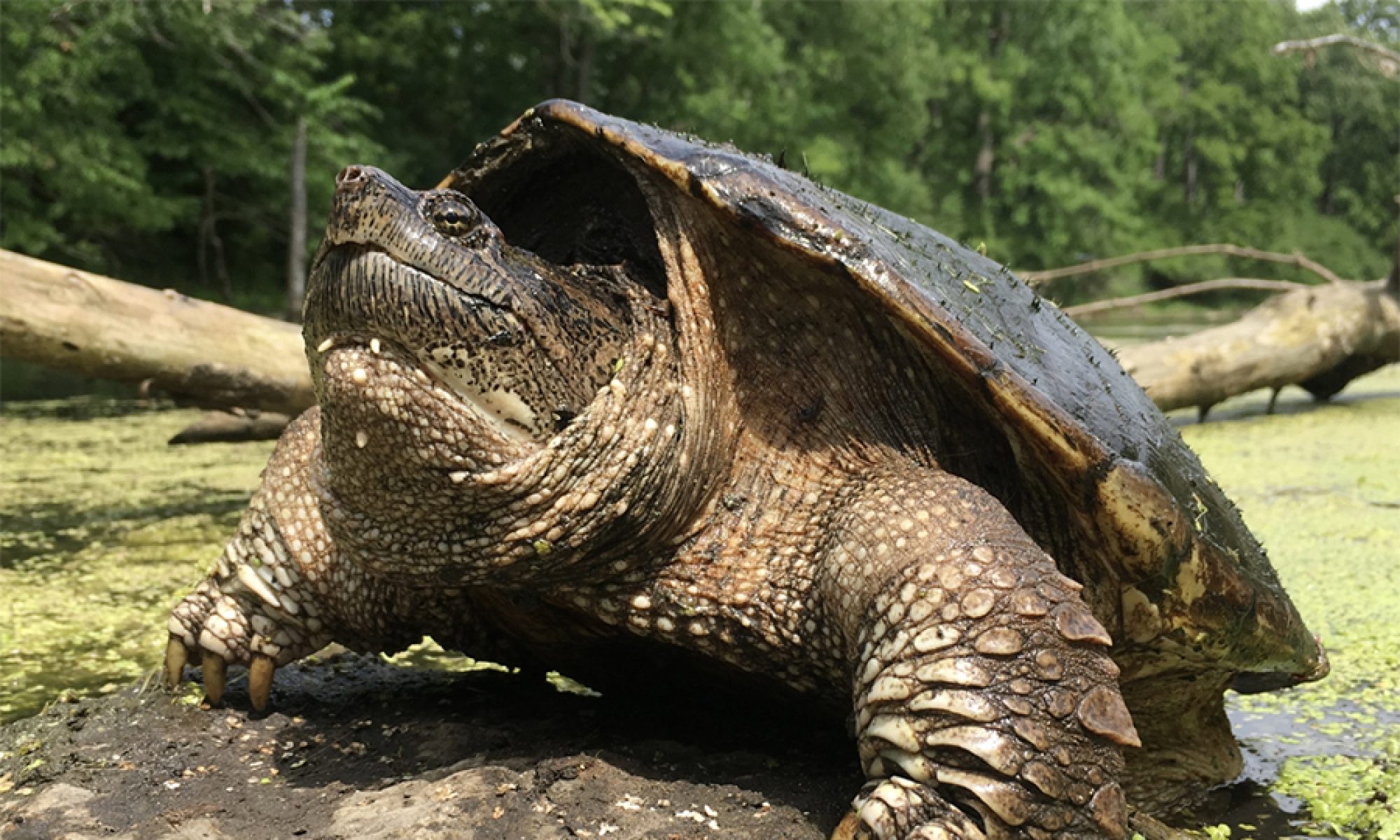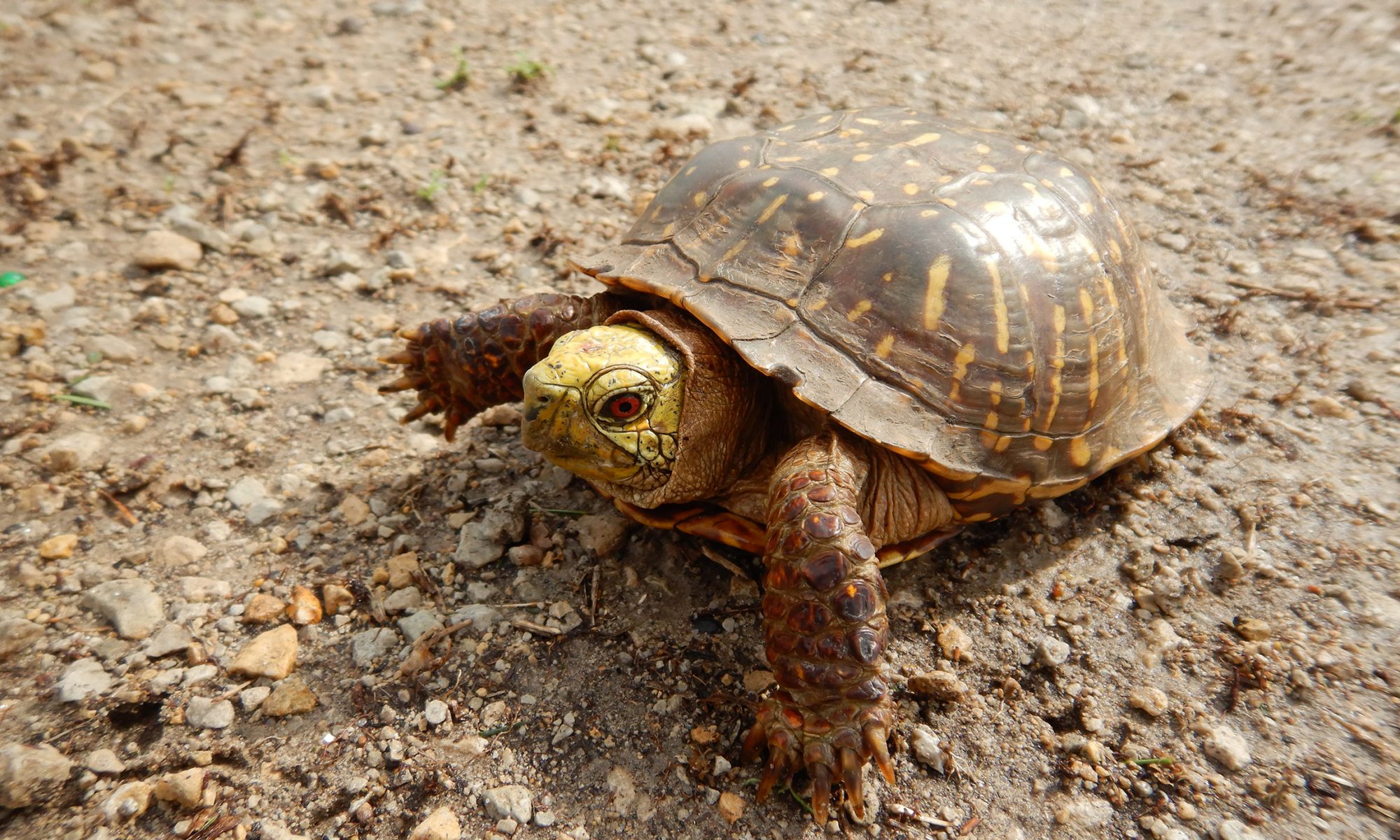By Devin Edmonds
Historically the Ornate Box Turtle was known from 45 counties in Illinois. Today you can count the number of counties with confirmed populations on two hands. This decline landed the species on the List of Endangered and Threatened Species of Illinois in 2009, with habitat loss and road mortality being the greatest threats to its continued survival.
We had the opportunity to survey two of the largest known Ornate Box Turtle sites this past week, with the goal of finding, measuring, and marking as many turtles as possible. With enough recaptures, we can calculate how likely it is for an individual to survive from one year to the next and determine population size. This helps us answer questions including: has population size changed over time? Is the population stable, increasing, or decreasing? Is the population at risk of extinction?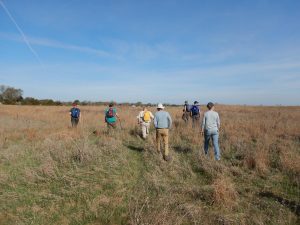
Searching for reptiles and amphibians is often quite tedious. You have to carefully scan ahead of each step for movement before a snake gets away, or spend hours flipping over logs to find the particular salamander you are looking for.
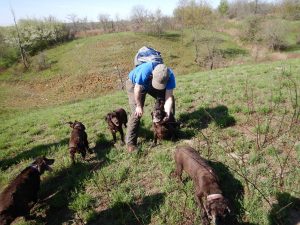 Fortunately, we were assisted on our survey by John Rucker and his Boykin Spaniels, who are not pets but rather working dogs. Years ago one dog proudly brought John Rucker a box turtle it turned up in the woods of Tennessee. He praised the dog and soon it brought back another one in its mouth. Eventually he turned his group of turtle finding dogs into a profession, helping biologists find these once common but increasingly rare chelonians for study.
Fortunately, we were assisted on our survey by John Rucker and his Boykin Spaniels, who are not pets but rather working dogs. Years ago one dog proudly brought John Rucker a box turtle it turned up in the woods of Tennessee. He praised the dog and soon it brought back another one in its mouth. Eventually he turned his group of turtle finding dogs into a profession, helping biologists find these once common but increasingly rare chelonians for study.
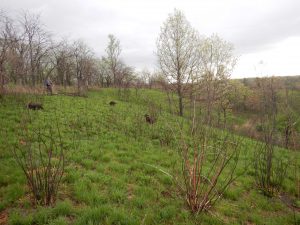 With John’s dogs, our work was made easy. They carried on ahead of us, their noses to the ground, brown bodies nearly concealed by knee-high grass. When a turtle was found, a dog picked it up in its mouth and carried the reptile like a precious toy, walking to John with pride and eyeing anyone else who offered to take the turtle from it with suspicion. John praised the dog and then gave the turtle to one of us to to be worked up.
With John’s dogs, our work was made easy. They carried on ahead of us, their noses to the ground, brown bodies nearly concealed by knee-high grass. When a turtle was found, a dog picked it up in its mouth and carried the reptile like a precious toy, walking to John with pride and eyeing anyone else who offered to take the turtle from it with suspicion. John praised the dog and then gave the turtle to one of us to to be worked up.
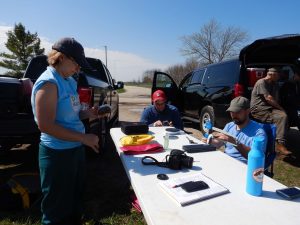 To keep track of individual turtles we are catching and whether they survive from one year to the next we mark each turtle with a code. The process is called shell notching, and involves cutting little pieces out of the marginal scutes (the sections of shell that border the outer edge) to assign a unique identification code to each individual turtle. The scutes are numbered from one to twelve on left and right sides, and by notching different combinations of scutes on each side more than 30,000 individuals can be individually identified. For example, by cutting a little section of shell on the first scute on the left side and the third scute on the right, you have just identified an individual as 01L-03R. When done properly, the shell notches stay with the turtle for the rest of its life.
To keep track of individual turtles we are catching and whether they survive from one year to the next we mark each turtle with a code. The process is called shell notching, and involves cutting little pieces out of the marginal scutes (the sections of shell that border the outer edge) to assign a unique identification code to each individual turtle. The scutes are numbered from one to twelve on left and right sides, and by notching different combinations of scutes on each side more than 30,000 individuals can be individually identified. For example, by cutting a little section of shell on the first scute on the left side and the third scute on the right, you have just identified an individual as 01L-03R. When done properly, the shell notches stay with the turtle for the rest of its life.
Mortality events due to disease outbreaks have been documented in the closely related Eastern Box Turtle, and there is concern that the Ornate Box Turtle is also at risk. While we were marking and measuring turtles, Dr. Matt Allender and members of the Wildlife Epidemiology Lab were giving each turtle a physical exam, drawing blood, and swabbing their mouth and cloaca to screen for diseases and monitor health. Their work is providing a baseline for future studies on the health of box turtle populations.
With the help of the turtle dogs, we found more than one hundred turtles at the first site and nearly seventy at the second. The data is now awaiting entry and analysis, but several turtles we found were originally marked by the Illinois Department of Natural Resources in 1988. At more than 30 years of age, these individuals are approaching the maximum known lifespan for the species.
Together with the population health assessment, we expect our ongoing project will guide conservation efforts for the Ornate Box Turtle in Illinois and help ensure its continued survival.
